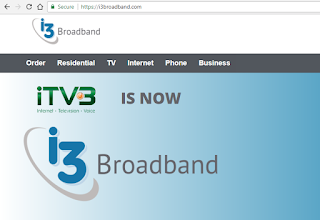Cisco launched a new generation of servers and software based on Intel's latest Xeon Scalable Platform processors and a unique Cisco system-level vision for the future of IT.
The Cisco Unified Computing System (Cisco UCS) M5 generation seeks to extend the power and simplicity of unified computing for data-intensive workloads, applications at the edge, and the next generation of distributed application architectures. The latest UCS Director 6.5 management software allows data center professionals to complete 80% of operational tasks from a single console. A Workload Optimization Manager, which is powered by Turbonomic and which is deeply integrated into the UCS hardware, uses intent-based analytics to continuously match workload demand to infrastructure supply across on premise and multi-cloud environments. The company says the Cisco UCS can reduce administration and management costs by up to 63 percent while accelerating the delivery of new application services by up to 83 percent.
Leveraging the new Intel Xeon Scalable processors, UCS M5 servers supports up to double the memory capacity of previous systems. Cisco said its lab testing reveals that UCS M5 servers deliver up to 86% higher performance over the previous generation of UCS.
The M5 generation of servers include:
“As organizations strive to become more competitive through real-time analytics and faster decision-making, new thinking around data center infrastructure is required,” said Liz Centoni, senior vice president and general manager, Cisco Computing Systems Product Group. “Our unique, unified system architecture delivers the agility our customers need to create a cloud experience on-prem, so that our new line of servers simply means faster applications with fewer complications.”
http://www.cisco.com
The Cisco Unified Computing System (Cisco UCS) M5 generation seeks to extend the power and simplicity of unified computing for data-intensive workloads, applications at the edge, and the next generation of distributed application architectures. The latest UCS Director 6.5 management software allows data center professionals to complete 80% of operational tasks from a single console. A Workload Optimization Manager, which is powered by Turbonomic and which is deeply integrated into the UCS hardware, uses intent-based analytics to continuously match workload demand to infrastructure supply across on premise and multi-cloud environments. The company says the Cisco UCS can reduce administration and management costs by up to 63 percent while accelerating the delivery of new application services by up to 83 percent.
Leveraging the new Intel Xeon Scalable processors, UCS M5 servers supports up to double the memory capacity of previous systems. Cisco said its lab testing reveals that UCS M5 servers deliver up to 86% higher performance over the previous generation of UCS.
The M5 generation of servers include:
- Cisco UCS B200 M5 Blade Server: a half-width blade form factor for traditional multi-tier or distributed applications. It supports two GPUs.
- Cisco UCS B480 M5 Blade Server: for workloads ranging from memory-intensive, mission-critical enterprise applications to distributed database virtualized workloads.
- Cisco UCS C220 M5 Rack Server: aa high-density 2-socket rack server that delivers performance and efficiency for a wide range of workloads, including virtualization, collaboration, and bare-metal applications.
- Cisco UCS C240 M5 Rack Server: a storage and I/O optimized enterprise-class rack server for big data analytics, software-defined storage and bare metal applications.
- Cisco UCS C480 M5 Rack Server: featuring a modular architecture for flexible technology refreshes, the C480 delivers scale-up extensibility for in-memory databases, big data analytics, virtualization, VDI and bare metal applications. GPU support has tripled—with up to six supported—as has disk capacity, which now supports 32 drives.
“As organizations strive to become more competitive through real-time analytics and faster decision-making, new thinking around data center infrastructure is required,” said Liz Centoni, senior vice president and general manager, Cisco Computing Systems Product Group. “Our unique, unified system architecture delivers the agility our customers need to create a cloud experience on-prem, so that our new line of servers simply means faster applications with fewer complications.”
http://www.cisco.com
















